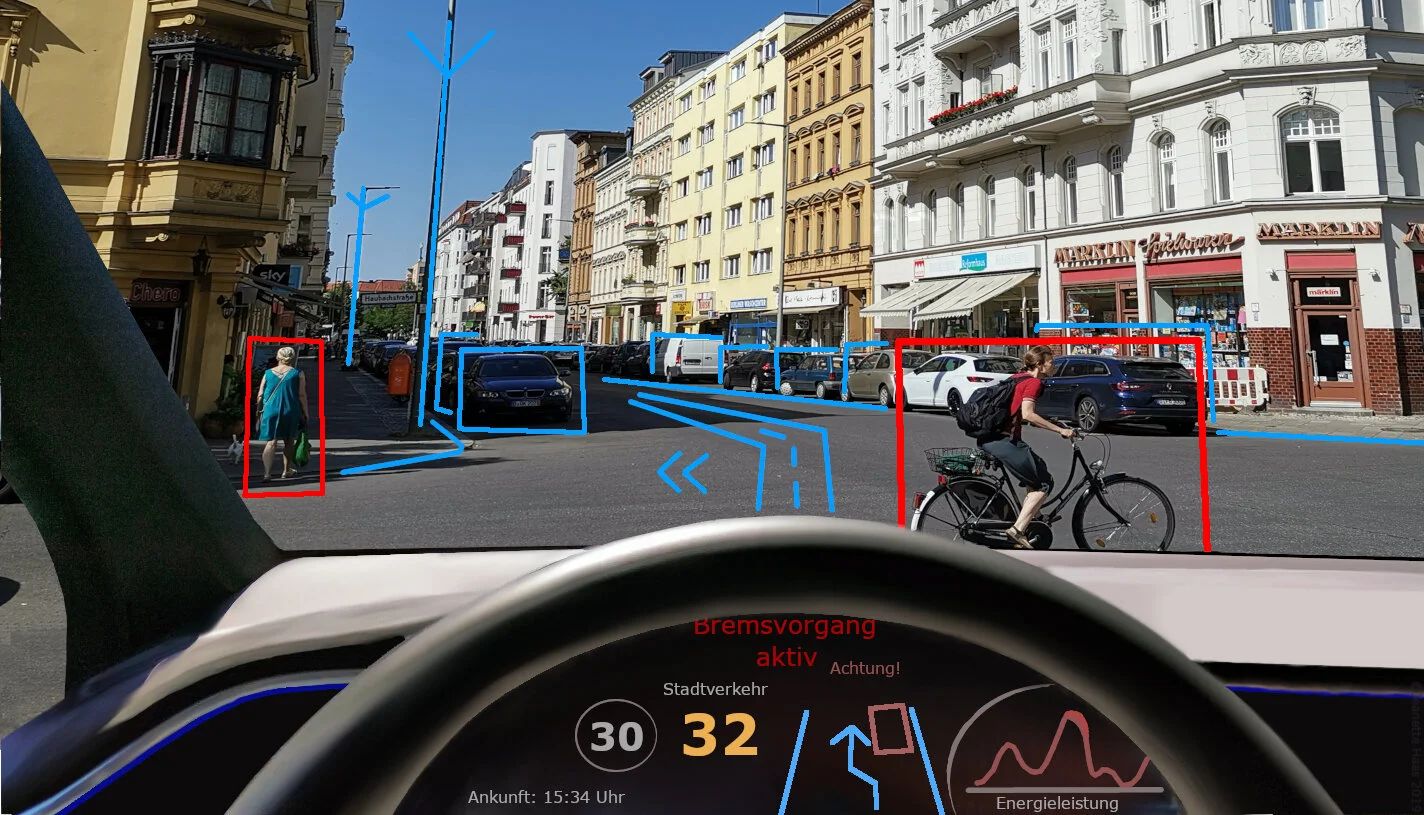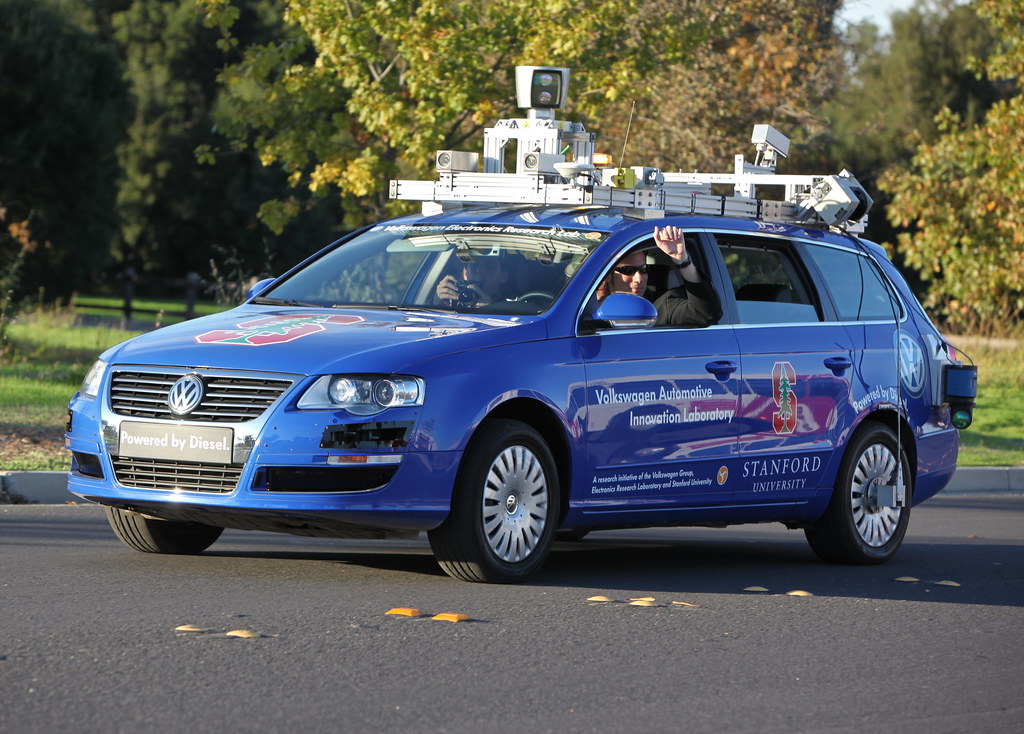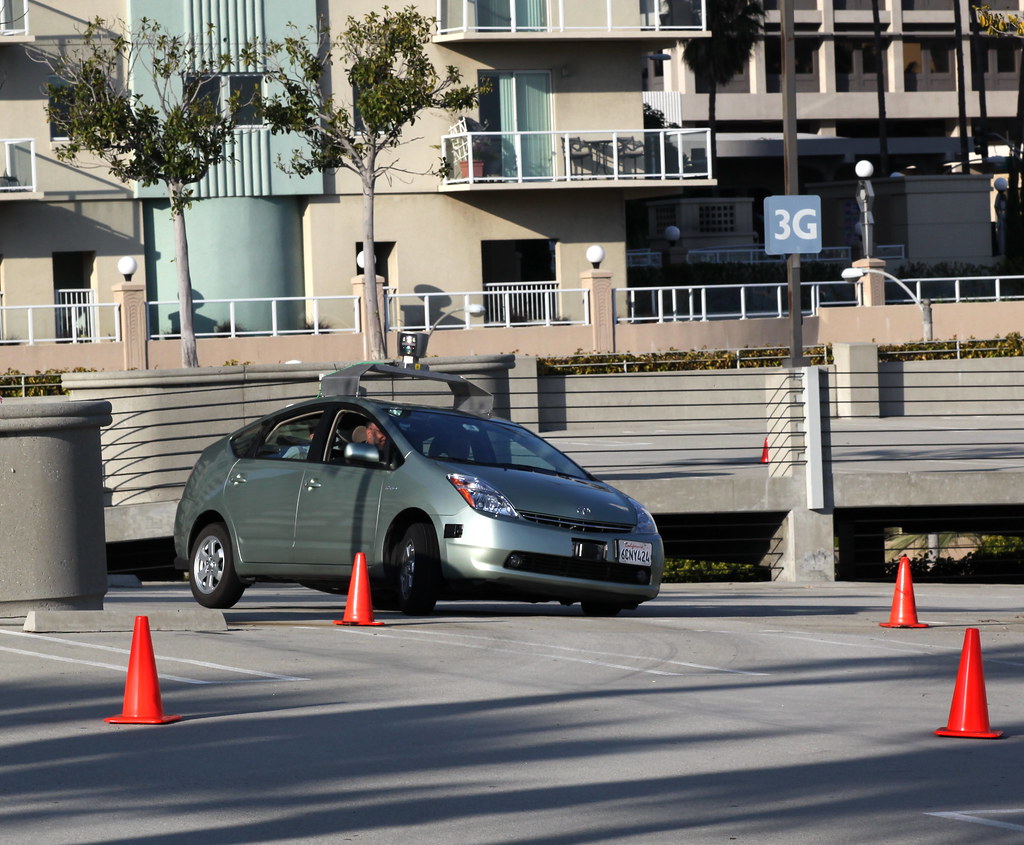
The advent of self-driving cars heralds a future brimming with the promise of increased safety, enhanced efficiency, and unprecedented convenience in transportation. Companies like Waymo, Tesla, and Zoox are already transporting hundreds of thousands of passengers weekly in autonomous vehicles (AVs) across various cities, a testament to the rapid advancements in this transformative technology. These vehicles offer undeniable benefits, as they cannot drive drunk, distracted, or tired, making car trips inherently safer and less stressful.
However, the journey to widespread adoption of autonomous vehicles is not without its significant challenges and concerns. While the technology is exciting, only 13% of U.S. drivers would trust riding in self-driving vehicles as of a February 2025 AAA survey, despite a slight increase from 9% the previous year. A substantial 6 in 10 U.S. drivers still report being afraid to ride in a self-driving vehicle, highlighting a considerable trust deficit that automakers and developers must address. In fact, a separate study found that only 7% of people surveyed had zero concerns about self-driving vehicles.
As these sophisticated systems become more prevalent, several critical flaws and practical concerns have emerged, demanding careful consideration before autonomous cars can truly integrate safely and effectively into our daily lives. This article will explore 14 of the most pressing issues currently facing autonomous vehicle systems, drawing directly from the challenges and complaints that highlight areas still needing substantial improvement to ensure these cars can safely navigate our roads and earn public confidence.
1. **Sensor Limitations**Autonomous vehicles operate by perceiving their environment through an array of advanced sensors, including LiDAR, radar, and cameras. These sophisticated components are the eyes and ears of the self-driving car, crucial for understanding and reacting to dynamic surroundings. However, their capabilities are not without significant limitations, particularly when confronted with complex or challenging real-world scenarios.
One fundamental issue lies in the accurate detection and interpretation of the environment. In situations such as heavy traffic or highly dynamic environments, these sensors can struggle to provide a perfectly clear and unambiguous picture. For instance, LiDAR technology, while powerful for generating detailed 3D maps, may encounter difficulties with reflective surfaces, which can distort its readings and lead to incomplete or inaccurate data.
Similarly, cameras, which are vital for identifying objects, lane markings, and traffic signals, can be severely hindered by external factors like glare from the sun or insufficient light conditions. These visual obstructions can cause errors in perception, leading the vehicle’s systems to potentially misinterpret critical information or even make unsafe decisions. Such limitations underscore the need for more robust sensor technologies that can perform consistently across a broader range of environmental variables.
In essence, while these sensors are marvels of engineering, their current vulnerabilities mean that they cannot always be relied upon to provide faultless data in every conceivable driving condition. Overcoming these inherent limitations is paramount for autonomous vehicles to achieve the level of safety and reliability necessary for widespread deployment and public acceptance, as any misinterpretation can have serious consequences on the road.
Read more about: Director’s Cut: 13 Concept Cars That Embody Steven Spielberg’s Visionary Future

2. **Adverse Weather Performance**Operating safely and effectively during adverse weather conditions presents a formidable hurdle for autonomous vehicles. Unlike human drivers who can adapt their driving style and perception to account for rain, snow, or fog, AVs rely on sensors that are particularly susceptible to environmental interference, significantly impacting their performance and safety.
Conditions such as heavy rain, a blanket of snow, or dense fog can profoundly obscure the sophisticated sensors that autonomous vehicles use to navigate. When visibility is compromised, the data gathered by LiDAR, radar, and cameras can become distorted or incomplete, leading to errors in the vehicle’s perception of its surroundings. This directly affects the vehicle’s ability to accurately identify obstacles, other vehicles, and road markings.
Beyond just obscuring sensors, adverse weather can also reduce the effectiveness of critical driving systems. For example, snow can cover lane markings, making it impossible for lane detection systems to accurately discern the vehicle’s position on the road. Similarly, fog can create a visual barrier that hides obstacles until it’s too late for the autonomous system to react appropriately, thereby increasing potential safety risks.
The challenge extends to the core operational logic of autonomous systems, which often struggle to maintain reliable performance when their primary data inputs are compromised. Ensuring that self-driving cars can operate consistently and safely in all weather conditions, not just ideal ones, is a complex engineering task that remains a significant area for ongoing research and development to build public trust.
Read more about: Buyer Beware: 15 Sedans That Become Money Pits vs. Those That Hold Their Value After Five Years
3. **Inadequate Mapping**Many autonomous vehicles depend heavily on high-definition (HD) maps for navigation, using them as a foundational layer of information about the road network and surrounding environment. These highly detailed maps provide precise data on lane configurations, traffic signs, road geometry, and other static features, allowing AVs to localize themselves and plan their routes with extreme accuracy.
However, a critical challenge arises from the dynamic nature of our physical world. For these maps to remain reliable, they must be frequently and meticulously updated to reflect any changes in the environment. New construction projects, temporary road closures, changes in traffic patterns, or even minor alterations to infrastructure can render previously accurate map data obsolete, leading to potential inaccuracies in navigation.
The problem is compounded by the fact that current HD maps may not always be current or universally available for all geographical areas where autonomous vehicles might operate. This limited coverage or outdated information can severely restrict a vehicle’s ability to interpret its surrounding environment accurately, especially in areas unfamiliar to its pre-loaded data.
Ultimately, this reliance on pre-existing data limits the autonomous vehicle’s capacity to adapt to real-time, dynamic changes that haven’t yet been mapped or updated. Such limitations can lead to navigation errors, confusion, and an inability to safely respond to unexpected alterations in the road environment, highlighting a significant dependency that needs to be overcome for true ubiquitous autonomy.
Read more about: Beyond the Mask: A Deep Dive into the Psychological Landscapes of Notorious Serial Killers and the Art of Criminal Profiling

4. **Vulnerabilities to Cyberattacks**In our increasingly interconnected world, autonomous vehicles, as highly sophisticated computer systems on wheels, are inherently susceptible to cyberattacks. This vulnerability poses a severe threat, potentially leading to unauthorized control of the vehicle, disruption of its operations, or breaches of sensitive data, all of which have profound safety and privacy implications.
Hackers could exploit a myriad of vulnerabilities within the vehicle’s complex software architecture or its communication systems. These systems are constantly communicating with external networks for map updates, traffic information, and even over-the-air software improvements, creating numerous potential entry points for malicious actors. A successful cyberattack could range from hijacking navigation commands to tampering with sensor data.
The consequences of such an attack could be catastrophic, potentially causing the vehicle to deviate from its intended path, initiate dangerous maneuvers, or even lead to accidents. Furthermore, autonomous vehicles collect vast amounts of data, including information about passengers, their routes, and behaviors. A data breach could compromise this personal information, raising serious privacy concerns and eroding public trust.
Ensuring robust cybersecurity measures is absolutely critical to prevent these threats. However, the sheer complexity and interconnectedness of these advanced systems make them incredibly challenging to fully secure against all potential exploits. Continuous vigilance, sophisticated encryption, and real-time threat detection are essential, but the ongoing arms race between cybersecurity experts and malicious actors means this remains a persistent and evolving challenge for AV deployment.
Read more about: Fortify Your Remote Fortress: 12 Essential Cybersecurity Strategies for US Remote Workers
5. **Decision-Making in Unpredictable Situations**Autonomous vehicles excel in predictable, structured environments where road rules are followed, and behaviors are consistent. However, they frequently struggle when confronted with unpredictable situations, particularly those involving erratic or unexpected behavior from other road users—be they human drivers, pedestrians, or cyclists.
These vehicles operate based on complex algorithms trained on vast amounts of data, meticulously learning patterns and expected responses. Yet, the nuanced and often illogical actions of humans on the road are difficult to programmatically anticipate. An algorithm may not accurately predict sudden lane changes without signaling, abrupt stops, or unusual pedestrian crossings, which are all common occurrences in real-world driving.
This limitation means that when an autonomous vehicle encounters an unusual or unpredictable circumstance, its programmed responses may be delayed, inappropriate, or simply nonexistent. The gap between programmed logic and the unpredictable reality of human interaction on the road significantly increases the risk of accidents, as the AV might fail to react in a way a human driver intuitively would.
Developing AI that can truly understand and anticipate human intent, especially when that intent deviates from learned patterns, remains one of the most significant cognitive hurdles for autonomous vehicle technology. It requires more than just data; it demands an ability to infer, adapt, and even make judgment calls in scenarios that defy strict algorithmic rules, a capability still under intensive development.
Read more about: Understanding the Road: Unpacking 14 Aggressive Driving Habits and Their Real-World Impact

6. **Pedestrian and Cyclist Detection**Detecting and accurately predicting the movements of pedestrians and cyclists poses a particularly significant challenge for autonomous vehicles, standing out as a critical safety concern. These vulnerable road users often exhibit highly unpredictable behavior, making them notoriously difficult for AV systems to consistently identify, track, and anticipate.
Unlike other vehicles that typically adhere to more rigid rules of the road, pedestrians and cyclists can make sudden stops, change direction without warning, or emerge from unexpected locations. A child chasing a ball into the street, a cyclist swerving to avoid a pothole, or a pedestrian making eye contact with a driverless car and stepping into traffic, not realizing the car will not stop, are all scenarios that challenge current AV perception and prediction capabilities.
The complexity lies not only in identifying these individuals but also in interpreting their potential intentions based on subtle cues that human drivers often pick up instinctively, such as body language or eye contact. Current autonomous systems can struggle to process these informal human communications, leading to a critical gap in understanding and interaction.
This difficulty can result in delayed or inappropriate responses from the autonomous vehicle, potentially posing severe safety risks. Improving the accuracy and predictive capabilities of AVs when interacting with pedestrians and cyclists is essential for ensuring their safe operation, as these are some of the most common and vulnerable elements of urban traffic environments.
Read more about: The Raw Truth: 10 Cars That Aced & Failed Crash Tests — Where Engineering Triumph Meets Genuine Disappointment
7. **Complex Urban Environments**Navigating the intricate and highly dynamic landscapes of complex urban environments presents a formidable and ongoing challenge for autonomous vehicles. These areas are characterized by a dense confluence of variables that can overwhelm the sophisticated systems designed to manage driving tasks, making precision and safety particularly difficult to guarantee.
Urban settings typically feature heavy traffic, a multitude of intersections with varying signal timings, and a constant presence of pedestrians, cyclists, and numerous stationary and moving obstacles. The sheer volume and unpredictability of these elements create a sensory overload for AV systems, requiring them to process an enormous amount of data in real-time and make split-second decisions within a fraction of a second.
Road infrastructure in cities can also be inconsistent, with faded lane markings, temporary construction zones, and unique local traffic rules that can confuse algorithms. The interaction with human drivers, who may engage in aggressive driving or disregard traffic laws, further complicates the decision-making process for an AV programmed to adhere strictly to regulations.
The multitude of variables in such environments can lead to errors or inefficiencies in navigation and decision-making, potentially resulting in hesitations, unnecessary stops, or even unsafe maneuvers. Successfully mastering these complex urban scenarios is a critical benchmark for autonomous vehicle technology, demanding more sophisticated AI and more robust sensor fusion capabilities to ensure seamless and safe integration into city life.
Read more about: The $15.8 Million Presidential Custom Fleet: A Deep Dive into High-Security Transportation and Campaign Operations

8. **Interference from External Signals**Autonomous vehicles, at their core, are complex computing systems that rely on a constant stream of external data to operate safely and effectively. This includes their dependence on Global Positioning System (GPS) signals for accurate location tracking and various communication systems for real-time traffic updates, mapping information, and vehicle-to-infrastructure (V2I) or vehicle-to-vehicle (V2V) interactions. This intricate network of communication is vital for an AV’s situational awareness and navigation.
However, this reliance on external signals introduces a significant vulnerability: the possibility of disruption from external interference. GPS jamming, where signals are deliberately blocked, or GPS spoofing, where false signals are transmitted to mislead the vehicle, can have immediate and severe consequences. Such acts of interference can cause the vehicle to lose its precise positioning data, leading to a critical breakdown in its ability to understand its location relative to its environment.
The implications of such signal disruptions are far-reaching. A loss of accurate positioning or the receipt of incorrect information can directly lead to navigation errors, causing the vehicle to deviate from its intended path or misinterpret its surroundings. In a worst-case scenario, this could result in the AV making unsafe maneuvers or even being involved in potential accidents. Ensuring signal integrity and developing robust countermeasures against interference are crucial for the reliable and safe deployment of autonomous vehicle technology.
Read more about: Electricity Explained: Unpacking the Invisible Force That Shapes Our Modern Lives
9. **Ethical Dilemmas**The prospect of autonomous vehicles making life-or-death decisions in unavoidable accident scenarios presents one of the most profound and challenging ethical dilemmas for this technology. Unlike human drivers who react instinctively in emergencies, AVs must be programmed with explicit rules to handle situations where harm is inevitable, forcing them to prioritize between potential outcomes, such as protecting occupants versus pedestrians.
Programming these decisions is immensely complex, as it delves into moral philosophy rather than just engineering. Different societies, cultures, and legal systems hold varying views on what constitutes the “right” decision in such impossible situations. Should the vehicle prioritize the lives of its passengers, who paid for the service, or external pedestrians, who are more vulnerable? The answers are far from universal, creating a significant challenge for developers striving for global deployment.
There are also palpable concerns that companies might program their vehicles to protect occupants at all costs primarily to mitigate potential legal liability, rather than adhering to a broader ethical framework. This approach, while understandable from a business perspective, raises questions about the societal impact and fairness of such embedded decision-making. The inherent challenge lies in codifying human morality into algorithms.
This complex issue demands transparent discussions and societal consensus on the ethical guidelines that should govern AV behavior during unavoidable accidents. As self-driving technology matures, these ethical dilemmas underscore the need for a collaborative approach involving policymakers, ethicists, and engineers to ensure that the embedded moral compass of autonomous vehicles aligns with public expectations and values, especially when choosing between protecting occupants or pedestrians in an unavoidable accident.
Read more about: From Man With No Name to Oscar Gold: A Ranked Journey Through Clint Eastwood’s Legendary Film Career

10. **Limited Understanding of Human Intent**One of the subtle yet critical limitations of current autonomous vehicle systems is their struggle to interpret the nuances of informal human communication. While AVs are adept at processing structured data like traffic signals and road signs, they often fall short in understanding subtle cues that human drivers instinctively pick up, such as gestures, eye contact, or body language from other road users.
This deficiency significantly hinders the vehicle’s ability to predict the intentions of pedestrians, cyclists, or even other human drivers. A pedestrian might make eye contact with what they perceive to be a human driver before stepping into traffic, assuming the car will yield, unaware that the driverless vehicle cannot interpret this non-verbal communication. Similarly, a cyclist’s hand signal might go unrecognized, leading to misinterpretations of their next move.
The inability to grasp these informal communications creates a critical gap in understanding and interaction within a mixed-traffic environment. This can result in misunderstandings, delayed responses, or even inappropriate actions by the autonomous vehicle, potentially leading to dangerous situations or accidents. For instance, a human driver might anticipate another vehicle’s sudden lane change based on a slight shift in its position or the driver’s head movement, but an AV might only react once the physical maneuver begins.
Bridging this gap requires developing AI systems capable of more advanced predictive modeling and social intelligence. Until autonomous vehicles can better “read” and anticipate human behavior based on these subtle, often subconscious cues, their integration into complex urban traffic, where human-machine interaction is constant, will remain a significant challenge for achieving truly seamless and safe operation.
Read more about: Seriously, Where Did They Go? 14 Famous Film Tropes That Vanished From Our Scripts
11. **Infrastructure Dependency**The optimal performance and safety of autonomous vehicles are highly contingent on the quality and consistency of road infrastructure. These sophisticated systems rely heavily on clearly visible road markings, well-maintained signs, and functional traffic signals to accurately perceive their environment, localize themselves, and make informed navigation decisions. Essentially, the ‘intelligence’ of the AV is often complemented and guided by the ‘intelligence’ embedded in the road network itself.
However, a significant challenge arises in areas where infrastructure is absent, outdated, or degraded. Faded lane markings, missing or obscured traffic signs, and malfunctioning signals can severely impair an autonomous vehicle’s ability to interpret its surroundings correctly. Without these crucial visual cues, the vehicle’s perception systems may struggle to delineate lanes, identify speed limits, or understand right-of-way, leading to confusion and potential errors in navigation.
In such compromised environments, autonomous vehicles may not only struggle to navigate efficiently but could also be forced to operate in an unsafe manner or, in some cases, fail to function altogether. For example, a vehicle relying on lane markings for precise positioning might become disoriented on a road where they are entirely worn away, prompting it to hesitate or even pull over. This dependency limits the widespread deployment of AVs, especially in regions lacking modern, standardized road infrastructure.
Therefore, ensuring a consistently high standard of infrastructure maintenance and, ideally, upgrading existing road networks to be more “AV-friendly” is a critical prerequisite for achieving widespread and safe autonomous vehicle operation. Without this foundational support, the promise of universal autonomous mobility will remain constrained to well-maintained, digitally mapped urban centers, highlighting a substantial hurdle for broader adoption.
Read more about: Decoding Offshore Wealth: An In-Depth Look at International Tax Havens for Elite Individuals and Corporations

12. **High Costs**The advanced technological components and complex software required for autonomous vehicles currently come with a substantial price tag, significantly contributing to the overall high cost of these groundbreaking machines. Each AV is equipped with an array of sophisticated sensors—including LiDAR units, high-resolution cameras, and radar systems—alongside powerful on-board computing hardware and intricate AI algorithms that collectively enable its self-driving capabilities.
These cutting-edge components and the intensive research and development invested in their creation drive up the manufacturing costs of autonomous vehicles, making them considerably more expensive than traditional human-driven cars. The cost barrier extends beyond just the initial purchase price, encompassing ongoing software updates, specialized maintenance, and the computational resources needed to continuously refine and validate the AI systems.
This elevated cost of production directly translates into higher retail prices for consumers, which, in turn, can severely limit accessibility and widespread adoption of the technology. For autonomous vehicles to become a ubiquitous mode of transportation, their price point must become competitive with or at least comparable to conventional vehicles, or they must be deployed in cost-effective models like robotaxi fleets that reduce the per-trip cost for users.
Until these advanced technologies can be manufactured at a much larger scale, reducing per-unit costs, high expenses will remain a significant challenge. Addressing this economic hurdle is essential for autonomous technology to transcend its current niche applications and integrate fully into the mass market, truly revolutionizing transportation for a broad spectrum of the population.
Read more about: Your Ultimate Guide: 14 Critical Car Rental Mistakes Abroad (And How to Dodge Them!)
13. **Regulatory Hurdles**A fragmented and inconsistent regulatory landscape stands as a formidable barrier to the widespread and seamless deployment of autonomous vehicles across different regions. The absence of standardized laws and guidelines, not just internationally but often within individual countries or even across states, creates a complex web of varying rules that AV developers must navigate.
This lack of uniformity means that a self-driving system developed and tested under one set of regulations in one jurisdiction may not be legally compliant or even permitted to operate in another. For instance, what is allowed in California might be prohibited in Texas, and vice versa. This patchwork approach complicates every stage of the AV lifecycle, from initial research and development to rigorous testing protocols, and ultimately, to the commercial deployment of these vehicles.
Such regulatory discrepancies force companies to potentially re-engineer or re-certify their systems for each new market, incurring significant additional costs and delaying rollout timelines. It also makes it difficult for consumers and businesses to understand what is permissible and safe, fostering confusion and potentially eroding public confidence in the technology due to inconsistent operational standards.
Overcoming these regulatory hurdles requires a concerted effort toward harmonization. Establishing clear, consistent, and internationally recognized frameworks for the testing, certification, and operation of autonomous vehicles is critical. Without such standardization, the full potential of autonomous technology to deliver safer, more efficient transportation across borders and diverse geographical areas will remain significantly constrained, hindering its evolution from a promising innovation to a truly integrated reality.
Read more about: Beyond Bidding Wars: 13 Studio Strategies and Megamergers Driven by Industry Moguls That Curtailed Independent Joint Ventures in Hollywood

14. **Data Privacy Concerns**Autonomous vehicles are not just modes of transport; they are sophisticated data collection platforms, continuously gathering vast amounts of information as they operate. This data includes highly sensitive details about passengers, such as their precise routes, travel times, habits, and behaviors, as well as extensive environmental data about the places they traverse. This constant collection raises significant concerns regarding the privacy and security of personal information.
The sheer volume and sensitive nature of the data collected by AVs mean it is at considerable risk of misuse, mishandling, or unauthorized access. In the wrong hands, this information could be exploited for targeted advertising, surveillance, or even more nefarious purposes. A data breach could expose personal travel patterns, reveal private routines, or link individuals to specific locations at specific times, compromising their anonymity and personal security.
Such privacy breaches can severely erode public trust, making individuals hesitant to adopt or rely on autonomous vehicle technology. The potential for companies to monetize this data without explicit consent or for governments to access it for surveillance purposes adds another layer of ethical and societal concern. Clear policies regarding data ownership, retention, and usage, along with robust anonymization techniques, are vital.
Addressing these data privacy concerns is paramount for building and maintaining consumer confidence in autonomous vehicles. Developers and policymakers must collaborate to establish stringent data protection regulations and implement strong cybersecurity measures that safeguard personal information, ensuring that the convenience and innovation offered by AVs do not come at the expense of fundamental privacy rights.
Read more about: Navigating the AI Frontier: A Critical Guide to the Best Chatbots for Boosting Your Daily Productivity in 2025
As we’ve explored, the road to a fully autonomous future is paved with both immense promise and complex challenges. From the sophisticated technical issues of sensor reliability and adverse weather performance to the profound societal questions of ethical decision-making, regulatory coherence, and data privacy, each hurdle demands meticulous attention. It’s clear that the path forward requires not just technological innovation but also a collaborative effort from engineers, policymakers, and the public to ensure these systems are not only advanced but also trustworthy and integrated responsibly. The success of autonomous vehicles ultimately hinges on our collective ability to address these concerns head-on, fostering a future where the benefits of self-driving technology truly enhance our lives and transport experience safely and ethically for everyone.



